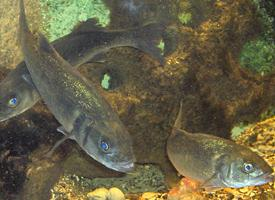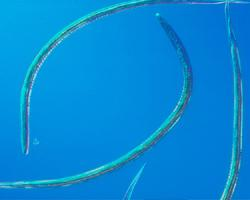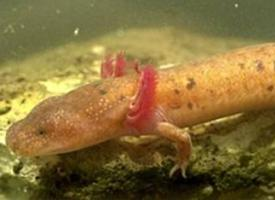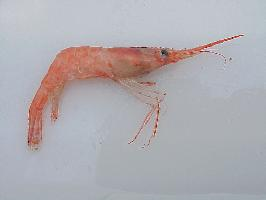
Stav ohrožení
| Ohrožen |
Popis zvířete
The European seabass (Dicentrarchus labrax), also known as the European bass, is a highly esteemed fish found in the waters surrounding Europe and in parts of the Mediterranean Sea. This species is notable not only for its economic and culinary value but also for its fascinating biology and behavior. The European seabass has been a subject of interest for both commercial fisheries and recreational anglers, drawing attention to its conservation status and the impact of fishing practices on its populations.Morphologically, the European seabass is a sleek, silver-hued fish, with a body that is both robust and streamlined, allowing for efficient swimming in various marine environments. It typically reaches lengths of up to a meter, though most specimens are considerably smaller, often around 50-70 cm in length. The fish is easily recognizable by its two distinct dorsal fins, the first featuring spiny rays and the second comprised of softer rays. Its scales are moderately large and its mouth, equipped with sharp teeth, is proportionately sized to its body, enabling it to prey effectively on a variety of marine organisms.
The habitat of the European seabass is quite varied, encompassing coastal waters, estuaries, and even venturing into freshwater rivers. They exhibit a notable adaptability to different salinity levels, which is a characteristic feature of the species. Juvenile seabass are often found in shallow, protected waters such as estuaries and lagoons, where food is plentiful and predators are fewer. As they mature, they tend to move into open sea areas, demonstrating a wide-ranging migratory behavior that is influenced by seasonal changes, water temperature, and breeding habits.
The diet of the European seabass is predominantly carnivorous, consisting of smaller fish, crustaceans, and cephalopods. This varied diet reflects the fish's opportunistic feeding behavior and its role as a significant predator within its ecological niche.
Reproduction in the European seabass is a fascinating process, with most individuals becoming sexually mature around the age of 3 to 4 years. Spawning occurs in winter or early spring, when the fish migrate to specific spawning grounds. The species is known for its interesting reproductive strategy, being a protandrous hermaphrodite; some individuals start life as males and later change to females, a phenomenon that ensures greater reproductive success across the population.
The European seabass has faced various challenges over the years, including overfishing and habitat loss. These pressures have led to a decline in some populations, prompting the implementation of conservation measures and sustainable fishing practices. The species is now subject to regulation in many areas, including size limits and seasonal fishing bans, to help ensure its long-term survival.
In culinary terms, the European seabass is highly prized for its delicate flavor and firm, white flesh. It is a versatile ingredient in the kitchen, suitable for a range of cooking methods including grilling, baking, and frying. The fish is a staple in Mediterranean cuisine, often featured in traditional dishes that celebrate its quality and taste.
In summary, the European seabass is a species of significant ecological, economic, and culinary importance. Its life cycle, behavior, and habitat preferences reflect the adaptability and resilience of the species, but also underscore the need for responsible management to ensure its future. As efforts continue to balance human consumption with conservation, the European seabass remains a symbol of the rich marine biodiversity of European waters and a reminder of the importance of sustainable interaction with our natural world.
Podobná zvířata
Nové fotografie zvířat
Top 10 zvířat
- Elephant hawk moth (Deilephila elpenor)
- Common house mosquito (Culex pipiens)
- Wasp spider (Argiope bruennichi)
- Common cockchafer (Melolontha melolontha)
- Fruit fly (Drosophila melanogaster)
- Australian box jelly (Chironex fleckeri)
- Colossal squid (Mesonychoteuthis hamiltoni)
- Moustached guenon (Cercopithecus cephus)
- Diana monkey (Cercopithecus diana)
- Bee hummingbird (Mellisuga helenae)


